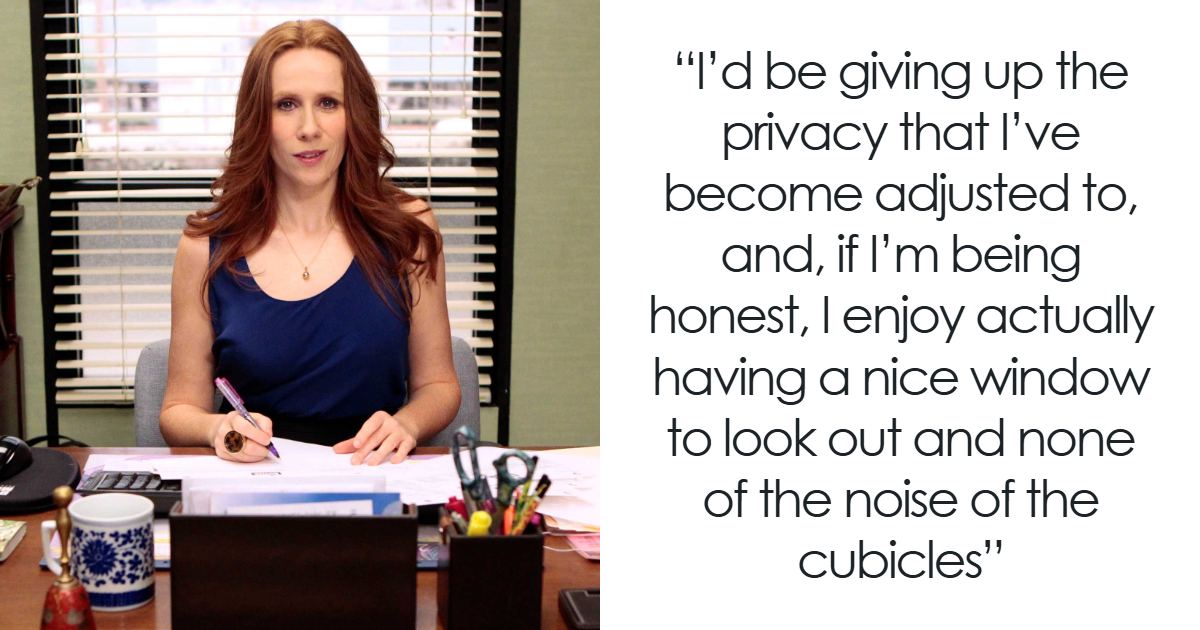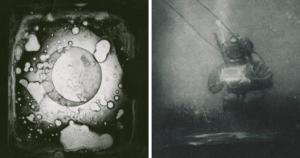Believed to be the world’s very first news photograph, this 1847 daguerreotype captures a dramatic and immediate event: a man being arrested in France. While the specific details of the crime have been lost to history, the image’s purpose has not. It was created to document a live moment for public information, reportedly appearing later in an illustrated history of the revolutions that would sweep the country the following year.
ADVERTISEMENT
Unlike earlier war photographs that focused on portraits or the aftermath, this 1870 image from the Battle of Sedan is a groundbreaking exception, believed to be the first ever taken during an active battle. From a precarious position among the French defenders, the photographer captured the chilling sight of a line of Prussian troops advancing directly toward them. This shot marked a pivotal moment, moving war photography from the relative safety of the camp into the heart of the conflict itself.
On July 20, 1976, humanity got its first-ever look from the surface of another planet. This historic image was transmitted by the Viking 1 lander just moments after it successfully touched down on Mars. The photograph, showing the spacecraft’s own footpad resting on the reddish, alien terrain, marked a monumental achievement for NASA and provided a stunning, firsthand view of the Red Planet.
ADVERTISEMENT
ADVERTISEMENT
To settle a popular 19th-century debate, photographer Eadweard Muybridge was hired by railroad magnate Leland Stanford to answer a single question: does a galloping horse ever have all four hooves off the ground at once? In 1878, after years of experimentation, Muybridge lined a racetrack with multiple cameras, each triggered by a tripwire. The resulting sequence of stop-motion photographs not only definitively proved that horses do go airborne, but when viewed in rapid succession, they also created the world’s first motion picture.
In this 1859 daguerreotype, a blacksmith is captured mid-swing, demonstrating the craft of forging a horseshoe. The image is notable not just for its depiction of skilled labor but also for the person who took it. The photograph was created by Sarah L. Judd, one of the pioneering women who operated their own photography studios in the earliest days of the medium.
ADVERTISEMENT
Before he even announced his groundbreaking invention to the world, Louis Daguerre created this image, an 1837 still life titled “The Artist’s Studio.” The carefully arranged collection of plaster casts and artwork wasn’t just a random snapshot; it was a technical demonstration. This photograph served as one of the earliest and most successful examples of his new daguerreotype process, proving its remarkable ability to capture fine detail, texture, and the subtle play of light.
This 1844 calotype, titled “Edinburgh Ale,” is less a formal portrait and more a candid moment shared between friends. In the photograph, pioneering photographer David Octavius Hill (right) joins writer James Ballantine and Dr. George Bell for a drink. The scene captures the social and collaborative nature of early photography, right down to the bottle of potent Edinburgh ale on the table, which one contemporary described as a powerful brew that “almost glued the lips of the drinker together.”
ADVERTISEMENT
ADVERTISEMENT
This rare and historic photograph, taken around 1853, offers one of the earliest known photographic glimpses into a Native American community. The image shows a small Cheyenne village at Big Timbers, in what is now Colorado, with four large tipis situated near a wooded area. It is a quiet but invaluable document, capturing a moment of everyday life before the major conflicts and forced relocations that would drastically change the American West.
This haunting image of barricades on a Paris street is believed to be the first-ever photograph of a news event in progress. Taken during the fatal June Days Uprising of 1848, the photograph reveals a strange limitation of early photography. The long exposure time required for the daguerreotype process meant that the chaos of the actual fighting was never captured. As a result, the image is an eerie and ghost-like record of the aftermath, showing the stage of a violent conflict with none of its actors visible.
ADVERTISEMENT
Taken just one day after the fort’s surrender, this photograph from April 14, 1861, captures the direct aftermath of the event that ignited the U.S. Civil War. The image shows the Confederate flag flying over Fort Sumter, marking the start of a conflict that would become one of the first to be extensively documented by photography. Created by Alma A. Pelot, it’s a stereoscopic photograph, meaning it was designed to be viewed in 3D, offering a more immersive look at this pivotal moment in American history. $10.00 (as of November 5, 2025 18:43 GMT +00:00 - More infoProduct prices and availability are accurate as of the date/time indicated and are subject to change. Any price and availability information displayed on [relevant Amazon Site(s), as applicable] at the time of purchase will apply to the purchase of this product.) $12.00 (as of November 5, 2025 18:43 GMT +00:00 - More infoProduct prices and availability are accurate as of the date/time indicated and are subject to change. Any price and availability information displayed on [relevant Amazon Site(s), as applicable] at the time of purchase will apply to the purchase of this product.) $176.09 (as of November 5, 2025 18:43 GMT +00:00 - More infoProduct prices and availability are accurate as of the date/time indicated and are subject to change. Any price and availability information displayed on [relevant Amazon Site(s), as applicable] at the time of purchase will apply to the purchase of this product.) (as of November 5, 2025 18:43 GMT +00:00 - More infoProduct prices and availability are accurate as of the date/time indicated and are subject to change. Any price and availability information displayed on [relevant Amazon Site(s), as applicable] at the time of purchase will apply to the purchase of this product.) (as of November 5, 2025 18:43 GMT +00:00 - More infoProduct prices and availability are accurate as of the date/time indicated and are subject to change. Any price and availability information displayed on [relevant Amazon Site(s), as applicable] at the time of purchase will apply to the purchase of this product.)
Joking Hazard Deck Enhancement #1 - Expansion Pack for Fun Party Games by Cyanide & Happiness, 100 New Hilarious Comic Cards | Perfect for Game Night
(48513139)
Joking Hazard Enlarged Box Empty Box for Card Storage
(4051639)
RIVER OF GOODS Alabaster LED Mesh Caged Ceiling Fan - 52" L X 52" W - White/Oak Wood-Grain Blades
(4254)
RIVER OF GOODS Farmhouse LED Ceiling Fan - 52" L x 52" W - Metal Caged Fixture - Rich Barnwood/Light Driftwood Fan Blades
(5057)
RIVER OF GOODS Stained Glass Magna Carta LED Ceiling Fan - 52" L x 52" W - Tiffany Style - Flush Mount Ceiling Fan with Remote - Teal
(445114)














































Post Comment